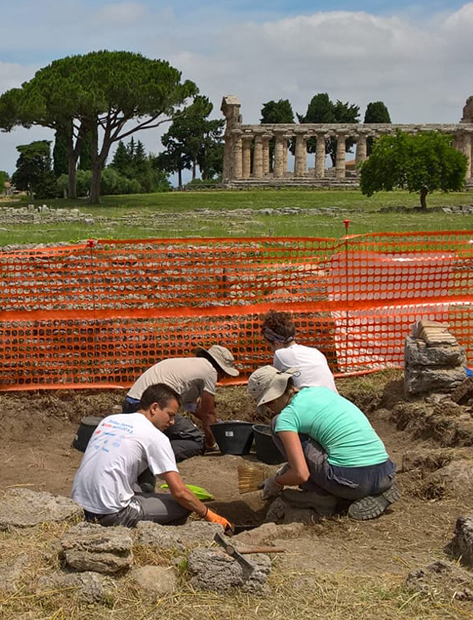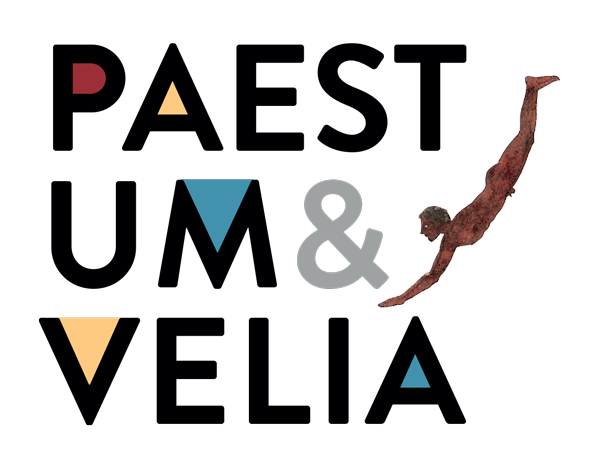
 Description:
Description:
The new investigations at the monument, dating back to 510 BC, started in 2018 and concerned the exploration of a small sector located on the eastern side, next to the Roman age boundary wall that encloses the shrine. The discovery of the section of a curved canal, partly carved in the stone, made it possible to assume that this feature would pertain to the mound that is believed to have originally covered the small building. Other investigations have been scheduled, to be performed starting in June 2019, to complete the exploration of the eastern side and start studying certain architectural elements that seem to pertain to the monument. The precious furnishings from the inside of the building are displayed at the Paestum Museum. Among them, the 8 valuable bronze vessels and an Attic amphora by the Painter of Chiusi, as well as a selection of the materials unearthed during the old excavations, among which the olpe with inscription dedicated to a Nymph stands out.
The Museum also houses is a panel with a hypothetical reconstruction of the monument covered by the mound, and a scale model of the agora with the mound and an altar at the oriental side of the building.
Scientific management: Fabrizio Pesando – Università degli Studi di Napoli “L’Orientale”
Staff: Laura Ficuciello – Università degli Studi di Napoli “L’Orientale”
Objective: Lo scopo della ricerca è la comprensione dell’assetto originario del monumento in epoca arcaica e la restituzione delle fasi edilizie fino alla romanizzazione.
Bibliography:
1. Greco – D. Theodorescu, Poseidonia-Paestum II, L’Agora, Roma 1983
2. Greco (con la collaborazione di L. Ficuciello), La ‘tomba’ del fondatore e le origini di Poseidonia, Quaderni di Antichità Pestane 3, Paestum 2014.
3. Ficuciello, “Il sacello ipogeico”, in C. Rescigno – F. Sirano (a cura di), Immaginando Città. Racconti di fondazioni mitiche, forma e funzioni delle città campane, Catalogo Mostra Santa Maria Capua Vetere – Paestum 2014, Napoli 2014, pp. 248-253.
Credits: Il progetto è stato condotto con i fondi di ricerca dell’Università degli Studi di Napoli “L’Orientale” e con il supporto logistico offerto dal “Camping Villaggio dei Pini” di Paestum (Torre di Paestum – località Licinella).






